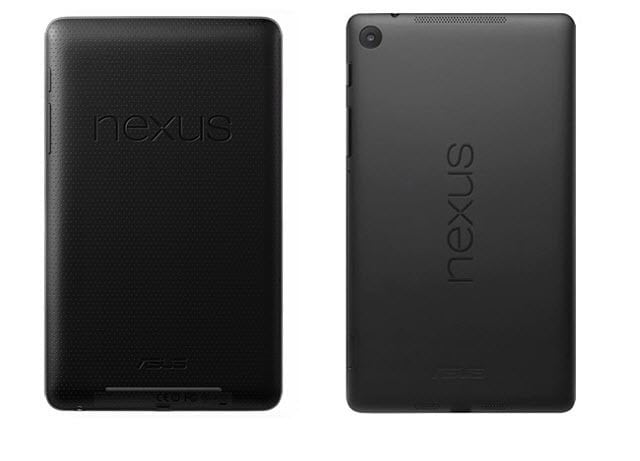Nexus 7 Design Differences
This is an aesthetics and subjective of all area, as beauty is always in the eye of the beholder. The new design looks more modern, with the Nexus logo on the back looking better in the new position. This makes it seem like it’s designed more for landscape view — which is the way a lot of people use it anyway.
Screen Display
If you were to go by that alone, there is absolutely no contest here. The old Nexus 7’s screen, while decent at its resolution of 1280 x 800 pixels, with a density of 216 ppi, doesn’t come close. The new version has a screen with a resolution of 1200 x 1920 pixels with pixel density is 323 ppi. The new version wins here.
CPU and RAM
The original one provides a great experience already — especially since TRIM support was added in Android 4.3, and it uses a NVidia Tegra 3 chipset with a quad-core 1.2 GHz Cortex A9 CPU. The new model, also made by Asus, uses the Qualcomm Snapdragon S4Pro chipset – we’re talking about a quad-core 1.5 GHz Krait. RAM is 2 GB – the old model had 1 GB. Power under the hood makes the new Nexus 7 the winner, which means you should be able to run graphically intensive games on it more smoothly.
Storage
Throughout its life on the market, the first Nexus 7 was available with storage space of 8, 16 and 32 GB, with the 8 GB model retired along the way. The new model is available in 16 and 32 GB versions. I guess we have a tie here, but with everyone storing data in the cloud, I don’t think storage space as much of an issue today. It’s worth noting that neither version offers a micro SD card slot.
Camera
The old Nexus 7 only has a 1.2 megapixel front-facing camera, designed for video chat, which you had to enable if you wanted to use it to take pictures or videos. The new model offers a 5 megapixel front-facing camera for video calls and a 5 megapixel rear-facing one, capable of filming Full HD video. Definitely worth the upgrade here if you want a rear camera.
Cellular Connectivity
The old Nexus 7 had, apart from the WiFi versions, the 32 GB model featured HSPA+ cellular connectivity, so you could use it on the go. The new Nexus 7 has a 4G LTE version, so data speeds are even better here.
Android version
The new Nexus 7 launches with Android 4.3 out of the box, but the old model has been upgraded to the latest version. A tie here.
Pricing
If you want to get the new Nexus 7, know that Google is selling two versions – the 16 GB model is $229 and the 32 GB WiFi model for $269. The 32 GB 4G LTE version, which is set to cost $349, is said to be coming soon.
Conclusion
Is the new Nexus 7 worth the upgrade? Most certainly if you want the latest and greatest with a rear camera. Or maybe you’re first tablet has been beat up and the touchscreen is no longer working for example. By the way, if that happens, learn how to re-purpose it as an eBook Reader. If you’re happy with your current first gen Nexus 7, there’s not much of a reason to upgrade now. However, if you want a crisper display, more processing power, and rear-facing camera, you’ll probably want to upgrade. What’s your take? Are you on the fence about upgrading? Leave a comment below and tell us your thoughts! Try going on a cruise or a flight without wi-fi or to many of the places without wifi. Comment Name * Email *
Δ Save my name and email and send me emails as new comments are made to this post.



